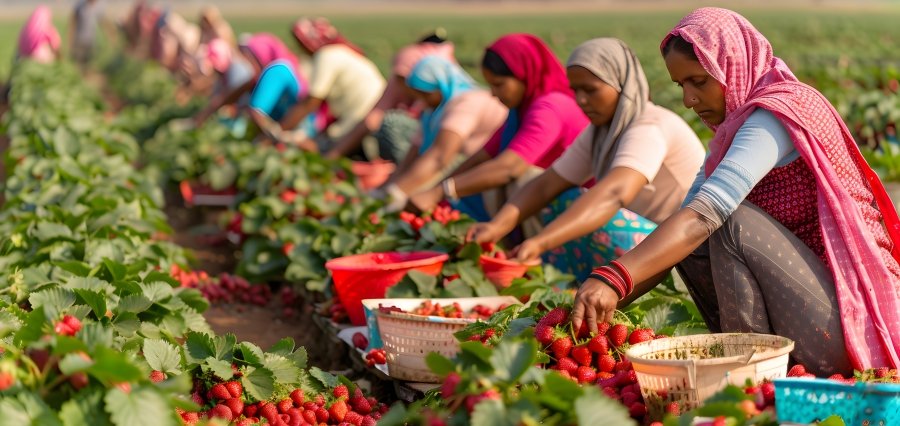Prime Highlights:
- Women farmers across India are moving from behind-the-scenes contributors to visible leaders, driving innovation and sustainability in agriculture.
- Empowering women in farming is crucial for India’s journey towards Viksit Krishi and Atmanirbhar Bharat by 2047, with policies and support systems enabling them to lead.
Key Facts:
- Studies show that if women had equal access to land, credit, and government programs, farm yields could increase by 20–30%, boosting national food security.
- Women-led initiatives in Nagaland, Punjab, and Tamil Nadu are reviving traditional crops, promoting nutritional diversity, and reducing chemical use, demonstrating their impact on sustainable agriculture.
Key Background:
Across India, women are becoming key drivers of change in agriculture. Women were always at the heart of farm production, seed storage, and community sustenance, starting in the green hills of the North East to the fertile plains of Punjab. However, they sometimes remain unnoticed in their work. With India targeting Viksit Krishi and an Atmanirbhar Bharat by 2047, women farmers would cease to remain behind-the-scenes performers and become visible farming leaders.
In villages, women rise early, do work in the fields, tend livestock, and do all the chores of the household. They take part in all activities of farming, such as sowing and watering, harvesting, and selling crops. Even after working so hard, most women continue to struggle with issues such as access to land, loans, and government programs. Specialists estimate that by equalizing resources between women and men, the food production of farms may grow by 20-30 percent, and the food supply to the country will increase as a result.
Women are also bringing in new ideas in farming. Women cooperatives in Nagaland have reintroduced the practice of millet farming and now market it in organic markets. Self-help groups in Punjab are cultivating mushrooms, which are supplementing their income and increasing their nutrition. Women farmers in Tamil Nadu are also on the frontline in efforts to cut down on chemicals by promoting safer, more sustainable methods of farming through pest management programs.
For India, policy support is important. The support that women receive by joint ownership of land, issuing special loans to women farmers, gender orientation training, and missions like the Mission Krishi Nari Shakti 2047 allows women to lead. Women enjoy better technology, training, and markets that can help sustainably, profitably, and productively farm.
Women will be at the centre of the agricultural development of India by the year 2047 through a stronger, fairer, and more viable agricultural sector. And not only is it the right thing to help women farmers, but a self-sufficient and prosperous India needs it.
Read Also : Nonprofits Turn to Storytelling and Digital Platforms to Empower Women and Communities




